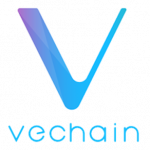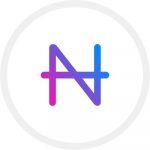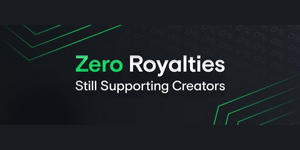
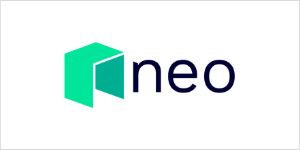
NEO
NEO – formerly known as AntShares – is a popular blockchain supporting smart contracts.
Read our review
VeChain
VeChain operates as a platform for smart contracts, similar to NEO and Ethereum.
Read our review
PVX
PIVX is a privacy-focused digital currency that was launched in 2016 as a fork of Dash to provide users with anonymous financial transactions.
Read our review
Overview: If you’re reading this, you probably already understand the benefits of long-term cryptocurrency investing. But perhaps you’re unaware that some crypto investments allow you to receive regular dividend payments.
Unlike airdrops or giveaways, crypto dividends are payments designated for crypto holders by the organization managing that project. That means that as the crypto grows, so does the currency’s value and, typically, associated fees, all of which become a dividend to coin holders.
In this article, we’ve researched the Top Dividend-Paying Cryptocurrencies for 2024, ranked by market capitalization, availability, and popularity. We’ve even estimated your annual dividend payment.
LooksRare (LOOKS)
Market Capitalization: $70,400,000
Daily Trading Volume: $2,700,000
No. of Supported Exchanges: 35
Size of Community (Twitter followers): 239,100
Estimated Annual Dividend: 9.0%
LooksRare is a decentralized, non-fungible token (NFT) marketplace that encourages traders and collectors to use the platform through a system of hefty rewards. The NFT platform launched at the beginning of 2022 and has offered its users over $1+ billion in rewards.
The ultimate goal of LooksRare is to dethrone OpenSea, which is currently the largest NFT marketplace by trading volume. LooksRare charges 0.5% on NFT sales compared to OpenSea’s 2.5% fee. The platform charges zero fees during the one-month promotion period ending December 16, 2023.
LooksRare’s native token is LOOKS. It has a maximum supply of 1 billion tokens, with almost half currently circulating. Unlike OpenSea and other centralized marketplaces, LooksRare distributes all NFT sale fees to LOOKS stakes, offering a dividend-like reward. The trading fees and rewards are paid in WETH (Wrapped Ethereum), with LOOKS investments eligible to accrue rewards daily.
LOOKS has a fluctuating price and is currently trading at $0.07. It peaked at nearly $7 shortly after the launch in January 2022 but has been under bearish pressure amid the crypto winter.
LooksRare gets a score of 4.0 from us for being the leading decentralized NFT marketplace paying dividends.
(BMJ Score: 4.0 out of 5)
VeChain (VET)
Market Capitalization: $1,529,343,380
Daily Trading Volume: $32,040,000
No. of Supported Exchanges: 100+
Size of Community (Twitter followers): 589,400
Estimated Annual Dividend: 2%
VeChain operates as a platform for smart contracts, similar to NEO and Ethereum. It boasts a highly scalable, eco-friendly Layer-1 blockchain infrastructure.
One of VeChain’s great perks is that it pays “dividends” in VTHO coins. Users have to hold VET tokens in their wallets to receive VTHO tokens. The payout is at a rate of 0.00043 VTHOR tokens per day per staking of 1 VET. The yearly dividend ranges from 1% to 3%, paid monthly.
Thanks to its scalability and eco-friendly ecosystem, VeChain gets a score of 4.0 from us.
(BMJ Score: 4.0 out of 5)
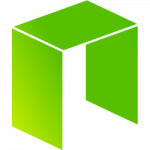 NEO (NEO)
NEO (NEO)
Market Capitalization: $773,797,866
Daily Trading Volume: $50,015,100
No. of Supported Exchanges: 100+
Size of Community (Twitter followers): 423,900
Estimated Annual Dividend: 3%
NEO – formerly known as AntShares – is a popular blockchain supporting smart contracts. It is often dubbed the “Chinese Ethereum.” It made waves during the ICO craze, but today it has lost ground against competitors like Solana, Avalanche, Polygon, and Polkadot.
The NEO ecosystem is fueled by the NEO token, which holders can lock in the NEO wallet to receive dividends in the form of GAS tokens. Note that NEO’s GAS differs from the gas fees paid on Ethereum. On NEO, GAS is the second token and is also used to operate and store tokens, smart contracts, and dividend rewards.
The price of NEO is $10.97 as of this writing, up 80% from $6,08 at the beginning of 2023. Elsewhere, the price of GAS is 8.30, up 300% year-to-date.
The annual percentage return on NEO is over 3%. As a rule, you receive 0.0004 GAS per day for every NEO token you hold.
NEO may offer a great decentralized infrastructure, but it couldn’t keep up with the intensifying competition, so it gets a score of 4.0.
(BMJ Score: 4.0 out of 5)
 PIVX (PIVX)
PIVX (PIVX)
Market Capitalization: $46,289,774
Daily Trading Volume: $5,677,313
No. of Supported Exchanges: 14
Size of Community (Twitter followers): 69,600
Estimated Annual Dividend: 13%
PIVX (Private Instant Verified Transactions) is a privacy-focused digital currency that was launched in 2016 as a code fork of Dash to provide users with anonymous financial transactions using its “sub-currency” zPIV.
PIVX uses the Proof of Stake Zerocoin protocol, enabling users to use their coins to secure the network. Users who hold PIVX in a supported wallet receive new PIVX coins at up to 13% per annum.
Users can also set up a “masternode” to earn up to 18.63% annually. To do this, they have to lock up 10,000 in collateral. The price of PIVX is $0.41 today, up from $0.23 at the beginning of the year.
PIVX deserves a higher score than KuCoin, Komodo, and NEBL due to its high APR figure and easy dividend earning process.
(BMJ Score: 3.5 out of 5)
 KuCoin Shares (KCS)
KuCoin Shares (KCS)
Market Capitalization: $645,117,850
Daily Trading Volume: $2,565,043
No. of Supported Exchanges: 6
Size of Community (Twitter followers): 2.5 million
Estimated Annual Dividend: 2%
KuCoin is a popular centralized crypto exchange founded in 2017. Kucoin’s latest financing round, held in May 2022, points to a valuation of $10 billion.
The native token of the crypto platform is KuCoin Shares (KCS), which represents an ERC-20 token. Users holding KCS in their KuCoin exchange wallet can receive daily rewards as part of the KCS Bonus program. The actual amount received depends on the user's holdings, the total amount held by all qualified users, and the platform’s daily trading volume.
In general, holding KCS can generate an APY of up to 2%. The daily dividends are paid from 50% of the exchange’s daily revenue from trading fees.
To become eligible for the rewards, users must hold at least 6 KCS, which is about $40 based on the current price.
KCS scores 3.0 out of 5 due to its passive income mechanism that rewards users.
(BMJ Score: 3.0 out of 5)
 AscendEX (ASD)
AscendEX (ASD)
Market Capitalization: $35,274,273
Daily Trading Volume: $1,627,276
No. of Supported Exchanges: 3
Size of Community (Twitter followers): 223,000
Estimated Annual Dividend: 7.81%
AscendEX, formerly known as BitMax, is a centralized cryptocurrency exchange launched in 2018. Last year, it rebranded to adopt the new name, which better reflects the team’s belief in the bright future of digital assets and avoids confusion with Bitmex, another crypto exchange.
AscendEX currently handles almost $150 million in daily trading volume. At the end of 2021, the exchange admitted that it was hacked, with experts estimating that about $80 worth of digital assets had been stolen. Nevertheless, the Singapore-based exchange handled the situation and covered the stolen funds.
The ecosystem is fueled by ASD (formerly known as BTMX), representing an ERC-20 token. ASD holders can receive daily rewards and enjoy lower trading fees. Currently, holding the token can generate an APR of almost 8%.
Users can buy the so-called ASD Investment Multiple Card, which can multiply the potential return. For example, if you have 10,000 ASD in your cash account and buy the card, the individual share of the platform distribution pool will be multiplied by 5. In other words, 10,000 ASD with Multiple Card has the same individual share as the investment of 50,000 ASD.
AscendEX offers an intuitive crypto trading platform, but it’s well behind giants like Binance and Coinbase in terms of features and security, and it gets a score of 3.0 from us.
(BMJ Score: 3.0 out of 5)
 Neblio (NEBL)
Neblio (NEBL)
Market Capitalization: $537,877
Daily Trading Volume: $44,718
No. of Supported Exchanges: 3
Size of Community (Twitter followers): 69,000
Estimated Annual Dividend: 10.00%
Neblio, launched in 2017, is a distributed computing platform for enterprise blockchain applications and services.
NEBL holders can receive 10% in annual interest by holding their coins in a supported wallet thanks to the Neblio network’s proof of stake protocol.
The project has had big plans, but unfortunately, it doesn’t have a big future after Binance delisted its token. NEBL has tumbled 98% and doesn’t show signs of revival. It gets a 2.5 from us.
(BMJ Score: 2.5 out of 5)
 Komodo (KMD)
Komodo (KMD)
Market Capitalization: $34,486,433
Daily Trading Volume: $1,743,907
No. of Supported Exchanges: 17
Size of Community (Twitter followers): 117,200
Estimated Annual Dividend: 0.1%
Komodo was launched in 2016 as a privacy-centric digital currency that leverages Zero-Knowledge Proofs to enable users to make private financial transactions. The multi-chain platform enables projects to create blockchains and host token sales.
Komodo is a hard fork from Zcash, a privacy-oriented fork of BitcoinDark. The Komodo platform hosts decentralized exchange (DEX) and blockchain development solutions.
Komodo used to pay generous dividends to users who held at least 10 KMD tokens in their wallets. The dividends, which Komodo calls Active User Rewards, could be claimed monthly. The annual interest on KMD tokens exceeded the 5% mark but was reduced to only 0.1% after a community vote.
The price of KMD is currently fluctuating near 24 cents, up from $0.17 at the beginning of 2023.
Komodo used to be a great passive income resource, but after the drastic reduction of the interest return, we can’t give it more than 2.5.
(BMJ Score: 2.5 out of 5)
NAVCoin (NAV)
Market Capitalization: $2,888,312
Daily Trading Volume: $27,620
No. of Supported Exchanges: 3
Size of Community (Twitter followers): 54,500
Estimated Annual Dividend: 4%
NAVCoin was launched in 2014 to add privacy to digital currency transactions. Through its dual blockchain system, NAVCoin users can make anonymous financial transactions on the NavTech subchain. Interestingly, Navcoin uses a PoS consensus mechanism to secure its network.
Users can stake NAV to receive dividend-like rewards of about 4% per year.
NAV hasn’t shown wild fluctuations this year, which makes the reward more predictable. It gets a score of 1.5 out of 5 from us.
(BMJ Score: 1.5 out of 5)
Bibox (BIX)
Market Capitalization: $447,294
Daily Trading Volume: $523
No. of Supported Exchanges: 1
Size of Community (Twitter followers): 67,000
Estimated Annual Dividend: 5%
Bibox is a Chinese crypto exchange providing decentralized financial services to users. Launched in 2017, it has been promoting itself as the first AI (artificial intelligence) crypto trading platform, although it has gradually lost momentum.
BIX is the native token of the exchange, and holders were eligible for dividend-like rewards. However, it seems to be a dead token today. Instead, the platform enables users to earn rewards by holding a wide range of tokens. The rewards are paid every Friday, while the APR differs from coin to coin, averaging 5%.
Bibox has lost momentum and is not as relevant as before. Its token is dead, and traders don’t trust it. It gets a score of only 1.0 from us.
(BMJ Score: 1.0 out of 5)
What are Cryptocurrency Dividends?
In traditional finance, dividends are regular payments made by companies to stockholders. The value of dividends derives from the company’s profits and is decided by the Board of Directors.
Regarding the crypto market, dividends represent rewards crypto companies pay from their revenue, fees, or profits.
You should not confuse cryptocurrency dividends with staking rewards or airdrops, especially as the latter create dilution. Even though crypto dividends often look similar to staking rewards, they derive from profits or revenues made by the project, usually a centralized service such as a trading platform. In the case of staking, the awards are paid to block validators who maintain the network.
This may be confusing because few projects in this list refer to their rewards as dividends.
Should You Invest in Dividend Cryptocurrencies?
To begin with, there are very few cryptocurrencies that pay dividends. Remember, you are also ultimately relying on the price of the underlying token. (If the token goes down 20% and you earn 10% in dividends, that’s still a loss of 10%).
On top of that, securing dividends doesn’t guarantee actual returns, as they are paid in the form of the native token or ETH, both of which can decline in price and leave you with less.
On the other hand, the fluctuating price of dividends may increase and eventually multiply your holdings in dollar terms.
Our approach is to invest in quality crypto assets first, not simply because they pay dividends.
Investor Takeaway
With traditional stocks, investors receive their dividends as cash or additional shares of a company’s stock, while crypto investors receive dividend payments in cryptocurrency tokens.
As mentioned, the value of crypto dividends can vary dramatically. Although any share's value can change, crypto is notoriously volatile and may result in considerable changes to your projected crypto dividend payouts. Always consider the project first and the dividend second.
Subscribe to Bitcoin Market Journal to discover more blockchain investment opportunities.


